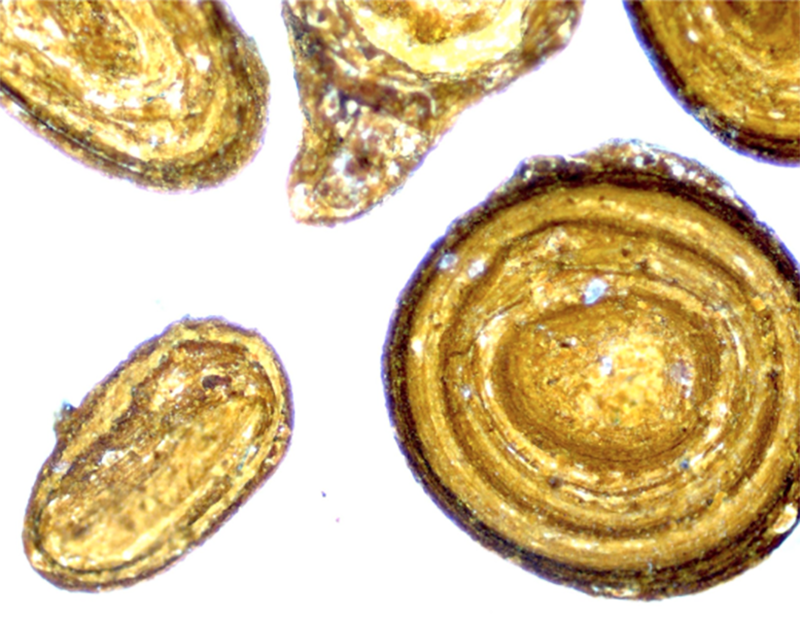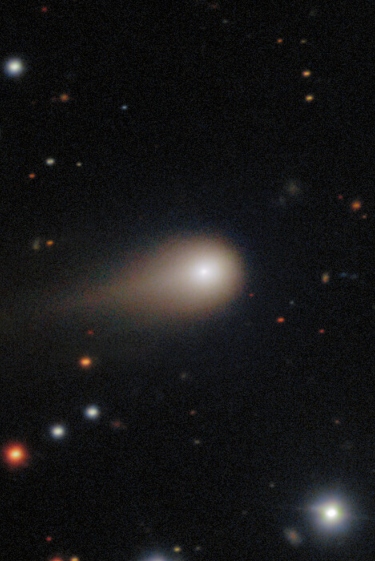Ocean’s Time Capsules – Reconstructing Earth’s Carbon History
Deep within the ocean, ancient carbon lies locked inside sedimentary rocks. In a recent study, scientists have uncovered these geological archives, revealing new insights that redefine our understanding of Earth’s history and the evolution of life.
Carbon is the element of life—the fundamental building block of every living organism, from proteins and sugars to fats and DNA. In the ocean, carbon is continually released by photosynthetic organisms, which absorb carbon dioxide and produce organic carbon compounds (molecules composed of carbon bonded to hydrogen and other elements), as well as by decomposing organisms whose remains enrich the surrounding water.
A new study published in Nature, led by Israeli researcher Nir Galili, reveals that dissolved organic carbon (DOC) can be preserved for billions of years within natural “time capsules.” The carbon binds to iron-containing minerals and becomes embedded in oceanic rocks. These rocks, formed on the seafloor, act as natural archives of biological processes that have persisted for over a billion years.
In the past, scientists were unable to isolate or precisely measure the amount of dissolved organic carbon. In this study, however, the researchers developed a novel method for reconstructing historical DOC levels. The carbon is preserved within ooids—microscopic iron spheres that form in shallow waters and trap organic material inside them. Although the organic carbon gradually breaks down over time, the ratio of its carbon isotopes remains stable, providing a reliable marker of the original quantity.
Developing this measurement method presented a significant challenge. The researchers had to identify and isolate minute iron grains—each measuring no more than 2 millimeters in size—from ancient rock layers, and to employ highly sensitive analytical techniques to quantify the carbon isotopes trapped within them. Each iron sphere preserves a distinct isotopic “fingerprint,” that allows scientists to reconstruct the oceanic conditions that prevailed more than a billion years ago.

Structures in which dissolved organic carbon is preserved. Ooids under the microscope. | Courtesy of Nir Galili
The Story of the Ocean
Because the study investigated exceptionally ancient time periods, the samples were not collected by research vessels at sea but were instead obtained from ancient sedimentary rocks found on land—rocks exposed through geological processes such as tectonic plate movement and erosion. Each sample represents the geological era in which it was formed. By integrating the measurements from these samples, the researchers were able, for the first time, to construct a comprehensive record of how oceanic carbon levels changed over more than 1.5 billion years.
The researchers found that the concentration of dissolved organic carbon (DOC) in the oceans fluctuated significantly throughout Earth’s history. These findings are consistent with current understanding of the evolution of life and its influence on the global carbon cycle. Between approximately 1.6 and 1.0 billion years ago, during the Paleoproterozoic Era (“paleo” meaning ancient; “proterozoic” meaning early life), the oceans were inhabited mainly by small, single-celled organisms. During this period, DOC levels were high and relatively stable. The metabolic activity of these microorganisms released carbon into the water, and the deep, oxygen-poor oceans enabled its long-term preservation, as the lack of oxygen prevented decomposition.
Between roughly 1.0 and 0.54 billion years ago, during the Neoproterozoic Era (“neo” meaning new; “proterozoic” meaning early life), the concentration of dissolved organic carbon (DOC) in the oceans declined sharply—by as much as 90 to 99 percent. Although oxygen levels in the oceans remained comparable to those of earlier periods, primitive single-celled organisms that evolved into more complex multicellular life forms likely exerted a profound influence on the levels of oceanic carbon. During this era, larger amounts of carbon were likely deposited on the seafloor and buried within sedimentary rock layers, leaving only a small fraction dissolved in ocean water.
Finally, during the Cambrian Period, approximately 540 million years ago, the concentration of dissolved organic carbon (DOC) rose again. This increase coincided with the rapid emergence and diversification of complex life forms, which reshaped the distribution of carbon and oxygen within the oceans. As photosynthetic activity intensified, oxygen levels in seawater rose, and the growing abundance of life led to greater production of organic carbon. Consequently, the oceans became more oxygen-rich, while DOC concentrations also increased, eventually stabilizing at higher levels.
Understanding the cycles of dissolved organic carbon (DOC) is essential not only for reconstructing Earth’s early biological history but also for comprehending the global carbon cycle as a whole. Although DOC constitutes a vast carbon reservoir, it is often overlooked compared with more extensively studied carbon pools, even though its total quantity is comparable to that of atmospheric carbon dioxide. Substantial shifts in oceanic DOC levels can set off cascading effects that influence both biodiversity and climate—two systems fundamentally shaped by processes within the oceans.



